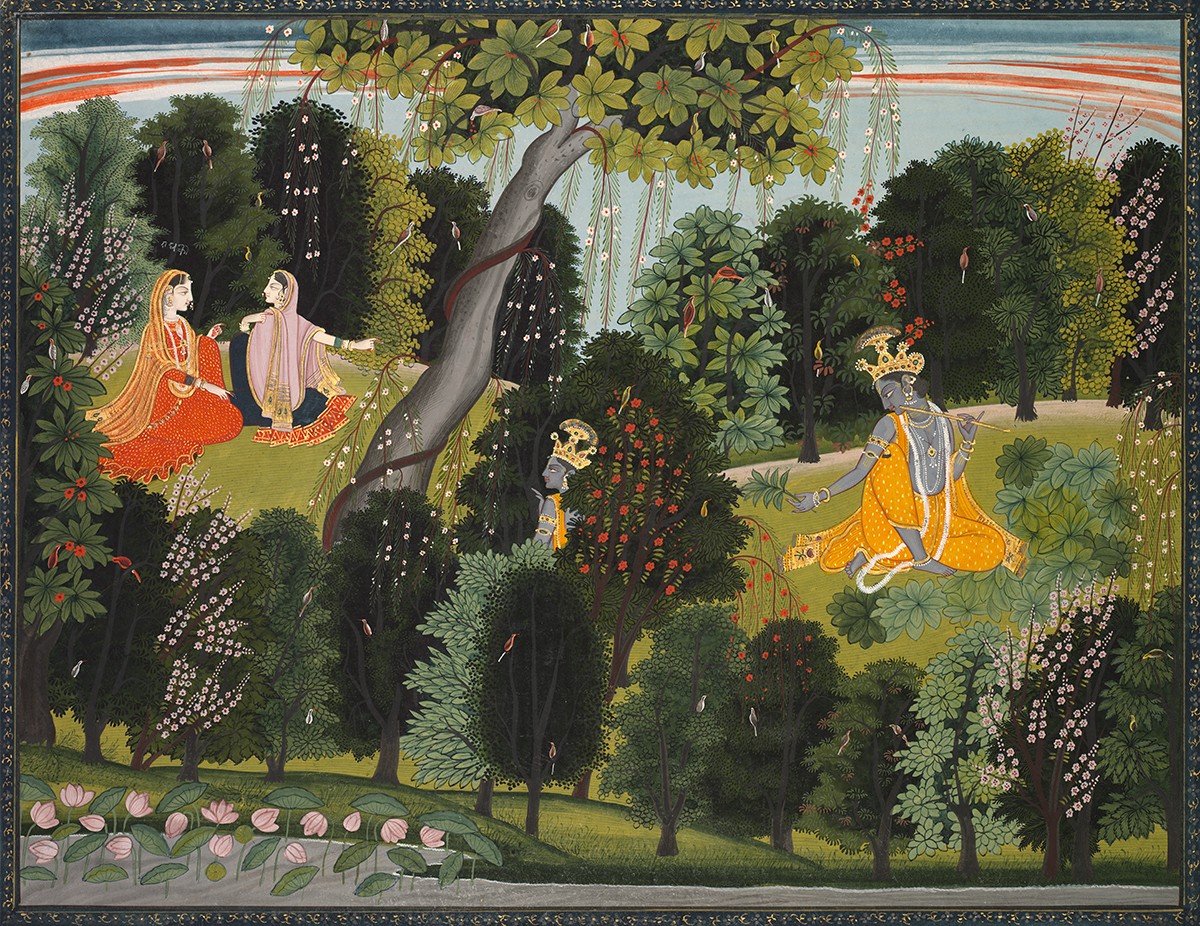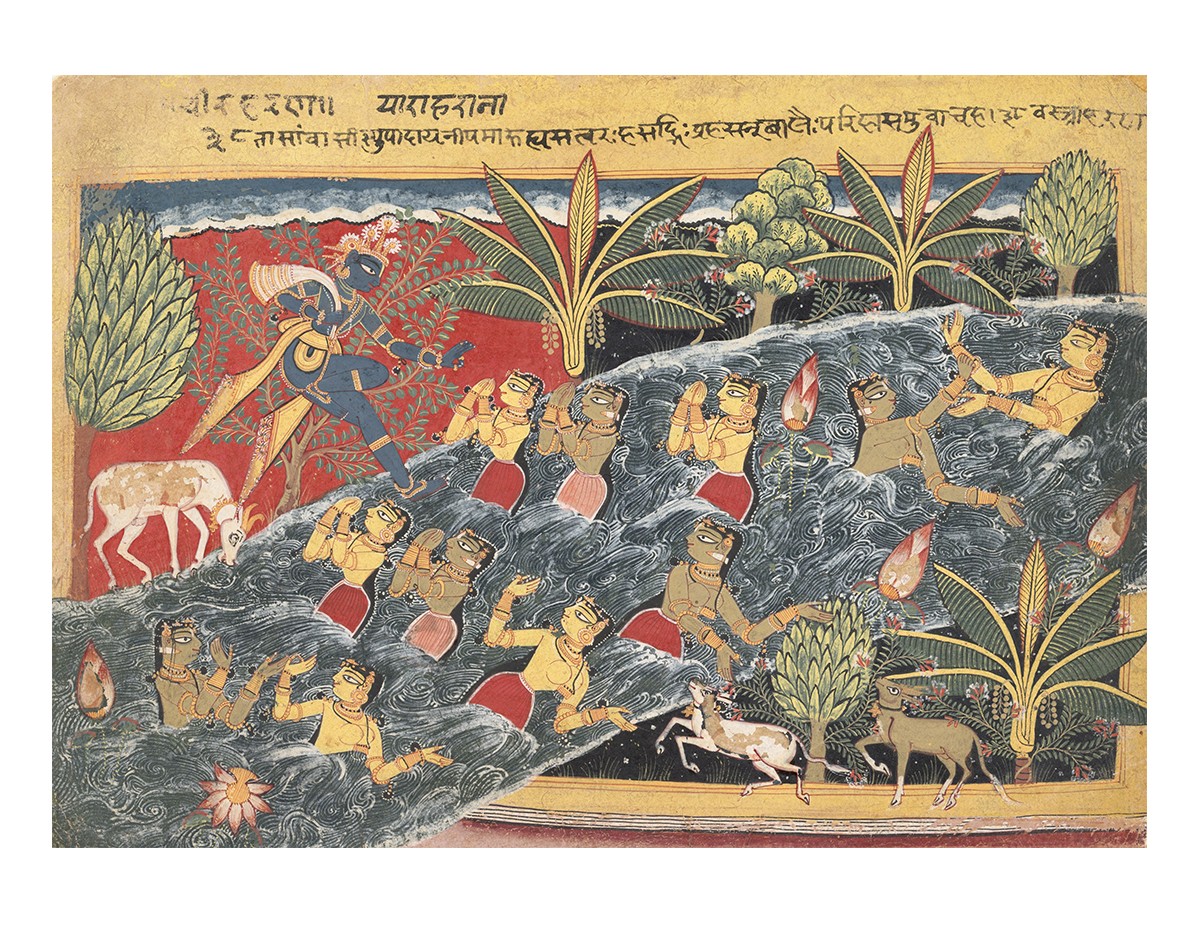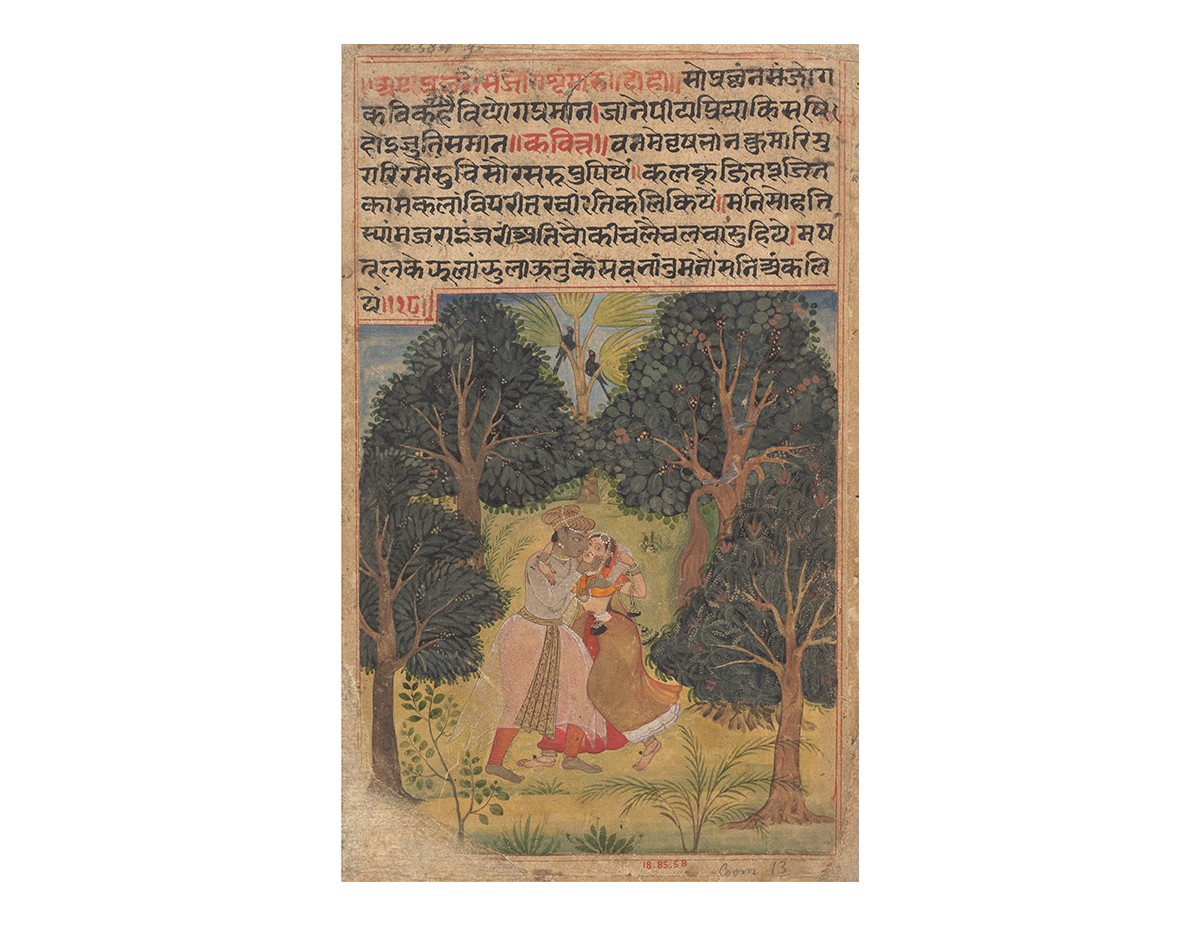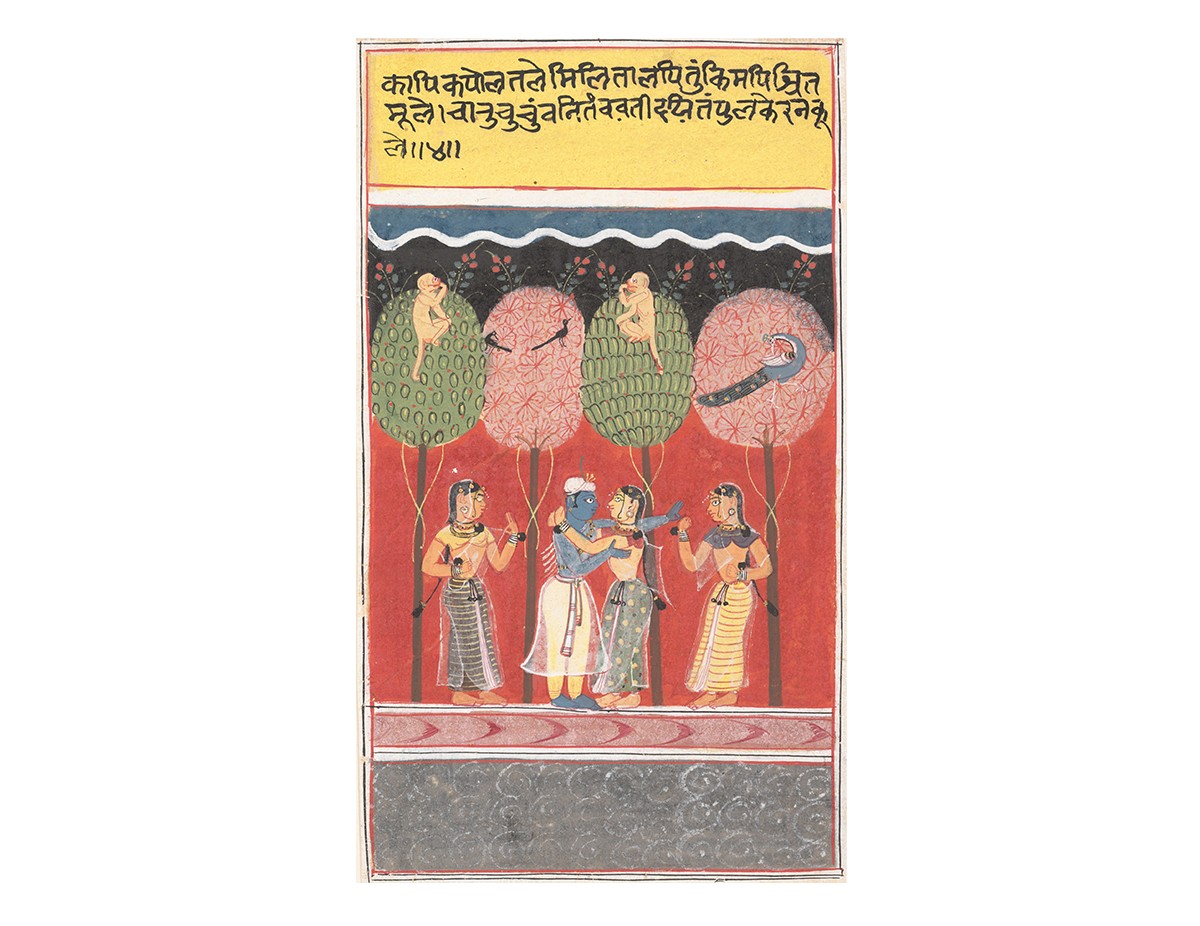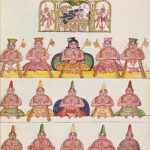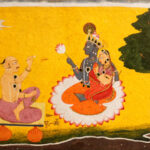Eroticism and Krishna Worship in Bhakti Movements
1450–1550
Vaishnava movements such as Pushtimarg Vaishnavism, Gaudiya Vaishnavism and Ekasarana Dharma — led by the teachers Vallabhacharya, Chaitanya and Sankaradeva, respectively — take root across northern and eastern India, influencing religious practice and forms of worship with their emphasis on Krishna as the central godhead.
Texts like the Bhagavata Purana and Jayadeva’s Gita Govinda are significant in influencing the philosophies of these movements, with their emphasis on the lilas (divine acts) of Krishna and the romantic love between the deity and the gopis (female cowherds) of Vrindavan, particularly Radha. The mystic eroticism and the depiction of shringara rasa featuring Krishna with the gopis or with Radha become a significant theme in artistic traditions, particularly Indian miniature painting traditions, where the representations of Krishna and Radha are also carried into non-religious poetic texts like Rasamanjari and Rasikapriya. The spread of Vaishnava movements also influences performance traditions in several parts of India.
Bibliography
Ahuja, Naman P. The Body in Indian Art and Thought. Edited by Belinder Dhanoa. Brussels: Europalia International, 2013.
Dehejia, Vidya. The Body Adorned: Dissolving Boundaries Between Sacred and Profane in India’s Art. Ahmedabad: Mapin Publications, 2009.
Elgood, Heather. Hinduism and the Religious Arts. London: Cassell, 1999.
Flood, Gavin. An Introduction to Hinduism. Cambridge: Cambridge University Press, 1996.
Hawley, John Stratton. A Storm of Songs: India and the Idea of the Bhakti Movement. Cambridge, MA: Harvard University Press, 2015.
Mitter, Partha. Indian Art. Oxford: Oxford University Press, 2001.
Feedback 
This entry appears in
Art in South Asia
Visit Timeline
Associated Timeline Events
First Published: March 11, 2024
Last Updated: May 20, 2024



